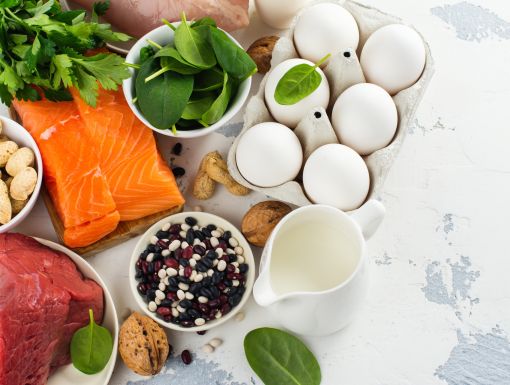
Healthy Cereals for Breakfast
Navigating the cereal aisle can be a minefield if you’re trying to find healthier options.
Why are breakfast cereals unhealthy?
Nearly all breakfast cereals are high in refined, processed carbs with minimal fiber and a negligible amount of fat. Combined with regular cow’s milk (more carbs) and the fresh fruit and/or juice that often accompanies a bowl of cereal (even more carbs), we’ve just downed a breakfast that sets us up for hunger and cravings within hours. And to top it off, most cereals are low in protein.
Our top picks
It’s not all doom and gloom in the cereal aisle, though. Here are three varieties that are legitimately nutritious options, providing a substantial dose of protein (and fiber) with minimal sugar.
Kay’s Naturals Cereal (available in Apple Cinnamon, Honey Almond, or French Vanilla)
- This gluten-free cereal has four times more protein than sugar and is available in single-serving packs for easy, protein-rich snacking or breakfast on the go.
- Ingredients include non-GMO soy protein isolate, corn flour and rice flour as well as pea fiber, honey, sugar and stevia.
- Nutrition Facts per one-cup serving: 120 calories, 19 grams carbohydrate, 4 grams fiber, 3 grams sugar, 12 grams protein
- The sugar is a bit higher than ideal, but it’s also rich in a variety of whole grains.
- Ingredients include Kashi’s Seven Whole Grain Honey Puff Cereal (a blend of whole grains sweetened with honey and cane syrup), soy protein isolate, oat fiber and Kashi’s Seven Whole Grains & Sesame Flour blend.
- Nutrition Facts per 1 1/4 cup serving: 180 calories, 40 grams carbohydrate, 13 grams fiber, 8 grams sugar, 12 grams protein
- Only a few stores carry it, so you may need to order it online, but it’s worth it!
- Per ½ cup: 97 calories – 14 grams carbs (2 net carbs) – 12 grams fiber – 0 sugar – 12 grams protein
- Ingredients include egg white powder, prebiotic fiber, pumpkin seeds, chia seeds, flax seeds, sesame seeds
- Sweetened with monk fruit
4 ways to add protein to cereal
Most cereals are low in protein, but there are a few ways to boost the protein in your breakfast.
- Switch milk. Regular cow’s milk has 12 grams of sugar and 8 grams of protein per cup. Look for brands of cow’s milk that are “ultra-filtered” – such as this one by Organic Valley – a process that strains out much of the sugary carbs. The result is milk with 50 percent more protein and 50 percent less sugar and carbs than regular milk.
- Top it with a protein drink. Skip the milk altogether and pour a ready-made protein drink over cereal instead. My favorite is ICONIC, but there are plenty of options out there. Just read the labels carefully.
- Stir a scoop of protein powder into milk, then pour it over cereal for a boost of 10 to 20 grams of protein. Tip: Make sure to dissolve the protein powder first or you’ll wind up with a clumpy mess in your cereal bowl.
- Skip the milk altogether and sprinkle your favorite whole grain cereal over cottage cheese or Greek yogurt, turning cereal into a crunchy topping, not the main event.
Schedule an appointment with one of our nutritionists today!
A version of this article originally appeared on NOLA.com. See the full article here.
Note: Registered dietician Molly Kimball offers brand-name products as a consumer guide; she, along with Ochsner Health, do not solicit product samples nor are paid to recommend items.
Editors note: This blog was originally published on March, 19 2019 and has since been updated.



